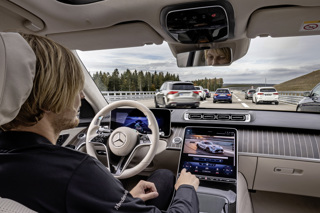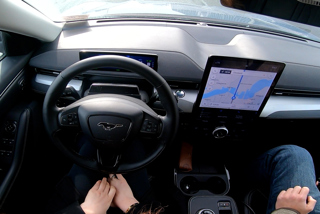By Karla Jakeman, head of automation at TRL
In recent times, there has been much talk about automated vehicles, with a great deal of interest from the connected and autonomous vehicle (CAV) industry and the public.
Vehicle manufacturers are actively working to bring these vehicles to the market, with many new models equipped with various automated features, leading to new marketing campaigns targeted at fleet managers and drivers.
However, many consumers may not fully understand the implications of terms like "self-driving," "automated," and "autopilot." Thus, it is crucial for those in the CAV industry to assist the public in gaining knowledge about automated vehicles so that they can make informed decisions.
How can automated cars become a part of our fleets?
Automated cars, also known as "self-driving cars," are becoming more common due to advancements in technology such as sensors, AI, and algorithms, which enable them to drive and navigate without human input. These vehicles have the potential to provide greater independence to those with disabilities, the elderly, and those without a driver's licence.
Additionally, they can reduce accidents, enhance traffic flow, and contribute to achieving Net Zero carbon emissions.
While a fully autonomous car may still be in the future, today's technology is already pushing boundaries, and drivers must be ready to take over in case of an unforeseen hazard or situation.
Public education is essential to help people form a non-apprehensive opinion of autonomous vehicles.
Without education, both fleet managers and the general public may continue to believe inaccurate information and remain hesitant to embrace the technology.
Therefore, all stakeholders involved in the development, deployment, and use of these vehicles should share responsibility for drivers' education.
Governments, vehicle manufacturers, tech companies, and educational institutions should collaborate to provide drivers' education and ensure the public has a better understanding of autonomous vehicles.
It is crucial for drivers to be knowledgeable about automated cars, as the responsibility to understand their operation does not solely lie with the manufacturers.
While manufacturers have an essential role in their safety, it is up to the driver to understand how to use their own vehicle, particularly when the car is bought second-hand.
Therefore, both manufacturers and drivers must collaborate to ensure that drivers have adequate education around automated cars to reduce potential safety risks.
What will the future bring?
The future of CAVs could bring significant changes to the way our fleets move around. However, regardless of advancements in automation, automated vehicles will not be our only option.
Fleets that prefer to leave the driving in the hands of their drivers will not need to worry about being left behind as CAVs become more popular.
At the same time, those who prefer to invest in a new fleet of vehicles will have convenience of a car without having to take the wheel.
Ultimately, the choice will remain in the hands of the managers as CAV technology continues to develop.























Login to comment
Comments
No comments have been made yet.